If you like oriental notes in landscape design, we offer to settle in your area of \u200b\u200bChinese juniper. This is a rather unpretentious perennial plant that will reward for the attention of the lush evergreen crown. The appearance of it resembles cypress, especially if it grows under good conditions and reaches 20 m, but most often juniper does not grow above 10 m. In the gardening culture, more low and sharpening varieties are popular. At first, the Chinese juniper appeared in Europe, then he was brought to the famous Nikitsky Botanical Garden, and after the plant was divided into Caucasian and Russian botanical gardens. The most remarkable in the Chinese juniper is that he even requires certain conditions for growth, but is completely indifferent to the rank of air, so it can be more successfully grown in the city. So, get ready to learn everything about landing the Chinese juniper.
Plant Features
The Chinese juniper differs from most of its relatives in small sizes and grows not more than 2 m with the crown diameter not more than 1 m. The coniferous foliage of the plant is very thick, but can be collected in crowns of various shapes depending on the variety. The most popular and widespread variety is Strict. His unusual needle with a bluish tint does not leave anyone indifferent and is able to transform any landscape composition.
Young juniper give a very slow increase, but after a few years the speed increases, and the plant reaches its maximum sizes. In the fall, small berries of dark brown or black and black appear. Depending on the variety, they may have healing properties, but it is impossible to use them in the food in the cheese.
Most often, the Chinese juniper is used in decorative purposes in gardening or landscape design. It perfectly tolerate the haircut, so you can form the most bizarre figures from the bushes. The plant is ideal for creating coniferous or mixed mixtures, as a supplement to rockers or alpinearia. However, experienced and wise owners can receive not only aesthetic pleasure from the plant, but also very practical benefits. Juniper is used in traditional medicine for a very long time - on its basis, effective anti-inflammatory funds are obtained. Mainly preparations from their own and berries are intended for outdoor use. Some helps to get rid of skin diseases, others "warm" the body, eliminating rheumatic pains, radiculitis and polyarthritis. The underground part of the plant is underway - juniper roots are used to treat lung diseases, including tuberculosis. And if you are tormented by allergies, prepare the decoction from the branches.
Also, you should not forget that juniper is a coniferous plant, and all conifers allocate phytoncides - beneficially useful volatile substances. However, juniper highlights as many as 30 kg of phytoncides per day, which is quite enough to purify the air nearby.
Interestingly: everyone knows that the juniper wood is very valued, but not only for a pleasant fragrance. The fact is that it has powerful natural antiseptic properties. Previously, in the villages, the juniper branches were used to disinfect wooden dask, barrels and boxes where vegetables and fruits were kept. And the smoke juniper was able to drive out of the house not only diseases, but also evil spirits.
Sorta
There are several varieties of Chinese juniper. They differ from each other not only by appearance and sizes, but also the peculiarities of care.
What varieties got spread in the middle lane:
- Strict - As we said, one of the most popular varieties. Grown, shrub acquires the form of a cone. By 10 years can grow to 1.5 m in height. The needles are very thick and has an unusual bluish or grayish tint. During the fertile period, Strict gives brown-purple bumps of spherical shape. The variety is distinguished by high frost resistance and does not need additional insulation even in cold misunderstanding winters. The only thing that can harm Stream, like any other variety - frequent transplants.
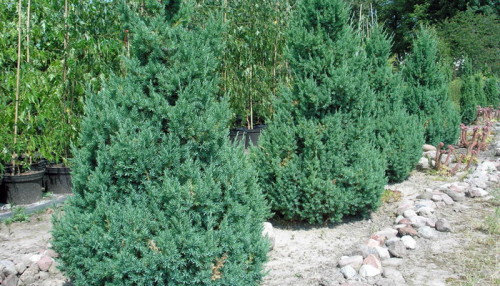
- Blue ALPS is a fairly large variety reaching 4.5 m in height. A bush with powerful branches, neat crown and hanging shoots. Blue Alps can be obtained along a rigid barbed needle 1 cm long silver-blue. The plant loves well-lit sections, perfectly tolerates cold winters, for which it is appreciated by gardeners and landscape designers. It grows well on the rocky and sandy soil, but nothing has nothing against a saturated organic soil. If you have always dreamed of testing your strength in the art of Bonsai, Blue Alps is suitable for this, as it is not better. Also, it turns out beautiful and thick live hedges.
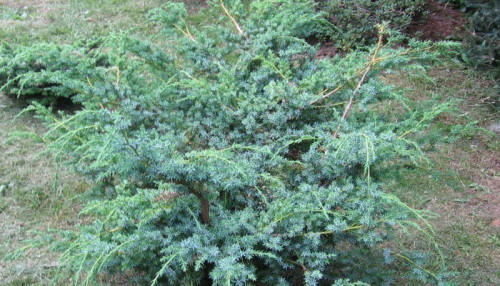
- Variagates - a small plant of a pyramidal form with a maximum height of 2 m. Find out the variance is very simply on a characteristic feature - chaotic scattered in Crown stain yellow color. This is a thermal-loving grade that requires insulation for the winter. Variagates do not like a large amount of moisture, so it is necessary to plant it away from water bodies and in well-drained soil. For the first couple of years, the variety requires careful care: it is necessary to protect the plant from direct sunlight, otherwise the needles will dry out, and also to warm up for the winter, especially if you live in the middle lane or further north. Crop the varigatide is needed in the spring before the start of the sludge (end of March-April). Hybrid varieties are particularly popular: stricle variages with cream spots, expansion of the variabat with beige stains.
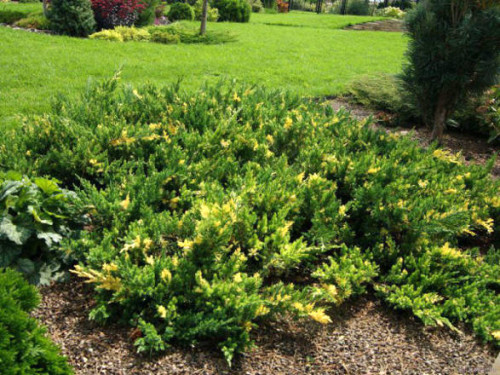
- Monarch is a mid-grade shrub height of 2.5 m and an asymmetric crown formed by fragrant barbed bay of grayish or bluish color. A distinctive feature of the variety is that there is a major vertical trunk, from which side secondary branches are departed at right angles, but by reaching a certain length, they are dramatically bent and grow up, because of which the bush acquires the original outlines. Monarch Despite its name completely unpretentious to the soil, loves well-lit plots and looks excellently both in itself and in a group with other plants.
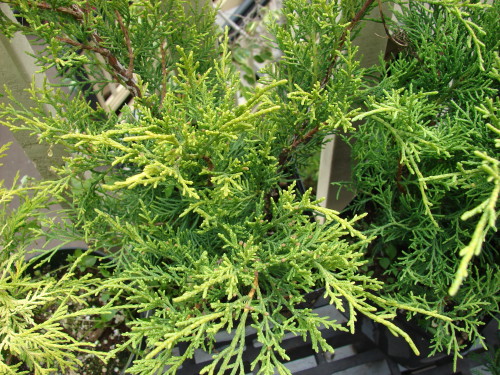
- Aurea plumes - a dwarf grade that does not grow above 1 m with a similar diameter of the crown. It is noteworthy that in the summer of the plants of Krone golden yellow, and closer to the cold the hue changes to the brownish. Interestingly and what vertically growing up the branches hang at the ends. Aurea plumps can adapt to any soil, but prefers fertile and well-drained. Designers consider this variety one of the most spectacular, actively using it at the design of rocaries, mixed compositions with magnificent shrubs and decorative cereals.
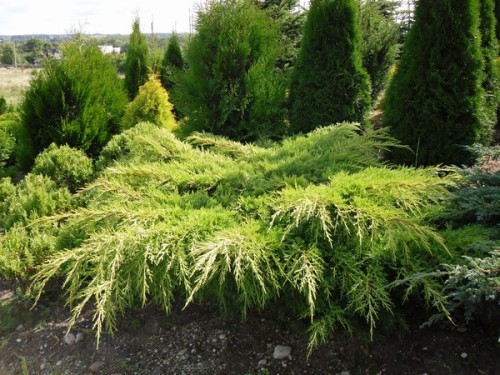
- Kurivao Gold is a high plant with a sprawling often asymmetric crown growing on 2 m. Learn this variety is possible by openwork hasty golden green and vertical shoots. The subtle pattern of the branches gives the plants of lightness and grace. Kurivao Gold loves well-lit plots and is best grows away from other high plants. If he won't be enough light, the needles will sweep, and the crown will not be so lush. The variety feels perfectly in urban environments, since it is not terrible to zagaznosta, poverty and dryness of the soil. It can also be grown in containers.
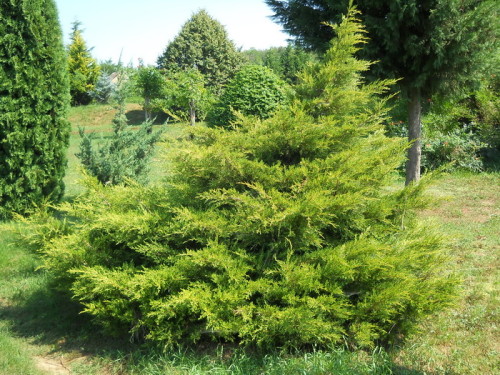
Growing technology
From the description of the Chinese juniper and its varietal forms it follows that the plant is not particularly whimsically and cultivating it is easy. However, if you want to achieve optimal results and get a healthy beautiful plant, you need to purchase high-quality planting material. The easiest and most preferred way to get a Chinese juniper is a visit to the Garden Center.
When buying, check with a consultant so that the young seedling is grown in a container with a closed root system. It is extremely important and sometimes the crucial moment, since the root system of coniferous plants is very vulnerable in the open air. We have already said that Juniper does not like frequent transfers, and it may be extremely negatively affected by the plant at such a young age. Therefore, the purchase of a seedling in a container with a closed root system is a guarantee that the bush will receive a minimum of stress and takes better in a new place.
The optimal time for the landing of the Chinese juniper Strict is the first half of spring or the beginning of the autumn before the onset of frosts. Choose a sunny area, but not in lowline so that there is no water stagnation. Juniper also does not like the neighborhood with curly plants. There are no special requirements for the composition of the soil - Juniper grows perfectly in Suglinka, and in the sandy soil. However, the optimal option is still available: a mixture of river sand, peat and a delicate earth in equal parts or in proportion 1: 2: 1. After landing the land around a seedling, you need to climb sawdust or moss to prevent too fast evaporation of moisture and the appearance of weeds.
What depth to dig a pit under a young bush? It depends on the size of the seedling itself, but usually dimensions do not exceed 70 cm in depth and diameter. To prevent stagnation of water, make a drainage pillow at the bottom of the pit out of 10 cm of sand and 10 cm of rubble or clay. Hut down large bushes, watch the root cervix to be slightly higher than the level of the earth - after the shrinkage of the Earth, it will be at the right level.
In the first time, the saplings need to watered well, and when they root, cutting watering up to 4 times in the season, that is, 1 time per month. After each session, we swear and slightly loose the soil around. If the weather was hot, the crown should be periodically sprayed - young plants poorly carry dry air. Speak spraying only after sunset or early in the morning.
Care
The height of the Chinese juniper is gaining very slowly, so it's not necessary to trim young bushes. However, it is possible to periodically inspect the plant and remove dried or sick branches from it. Despite the frost resistance of the juniper, the first couple of years, young plants need to be insulated: wrapping the bushes with Loutrasil, and the ground is closed with a noodle, chips or sawdust. If winter promises to be a snowy, it is necessary to protect the thin twigs of Strickt variety from the break, riding the bush with twine.
Because the juniper is downtown, fruit only female individuals. The male plant can be found in a column-like or ovoid form of the crown, the crown of women will be prostrated and loose. In the middle of spring, yellowish spikelets are visible on male individuals, small green bumps, which with the onset of autumn turn into berries with seeds inside. The taste of berries is bitter, so it makes no sense to eat them in the cheese form, but you can add to tea or healing decoction for the prevention of colds.
As for pests and diseases, the greatest danger for juniper represents the TLL, the web tick and the juniper panel. At the very first signs of lesions of the plant, it is necessary to spray a bush and nearby plantings by chemicals.
What diseases are most often affected by the Chinese juniper:
- Rust - manifests itself in the form of browned growths with an orange bloom and leads to the dying of individual parts, and then to the death of the entire plant. That is why treatment must be started as early as possible, deleting patients branches and processing the bush with a special drug (well-established "Archerid").
- Drying branches - if you notice that the bark of the bush began to dry, the needles turn yellow, it means to immediately remove the affected branches, to decoke the cuts of 1% copper sulfate solution, after which these places are gardened. Remote parts of the plants must be burned so that the infection does not spread. For the prevention of early spring and autumn, juniper landings need to handle 1% Bordeaux mixture or special preparations like "HOM". In the event of a re-manifestation of the disease, treatment can be carried out in summer.
- Brown spit - manifests in the spring as yellowed, and then taking the needles. It does not appear, but the tank branches begin to die, as a result of which the bush loses its attractiveness. It is necessary to treat from brown spider in the same way as from the drying of the branches - to trim and burn the affected areas, after which the cuts of chemicals.


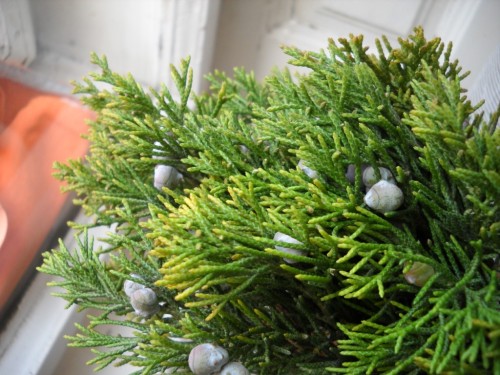
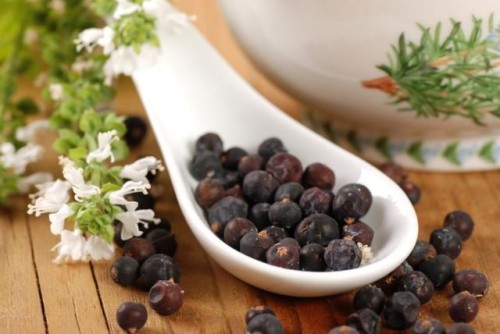
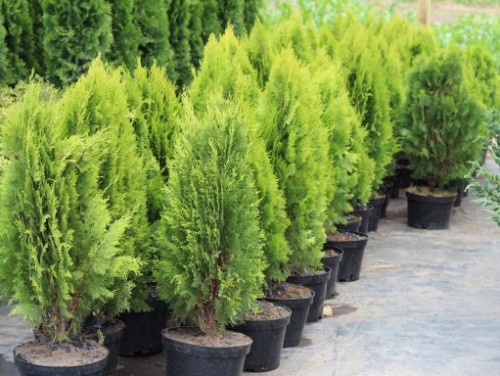
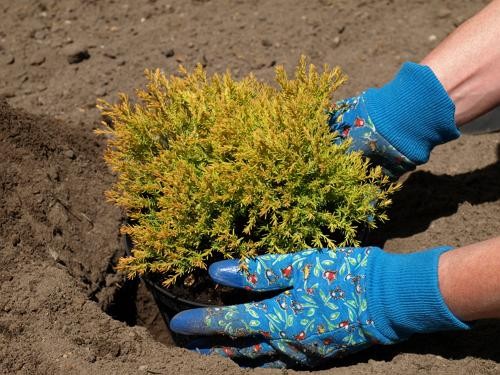

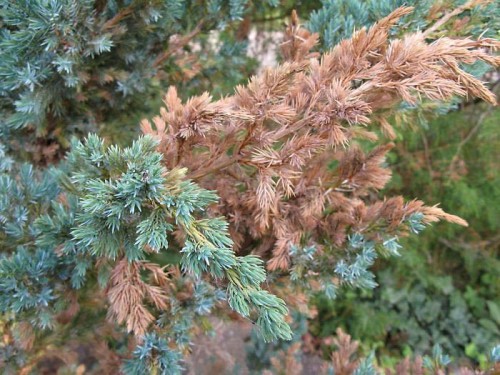
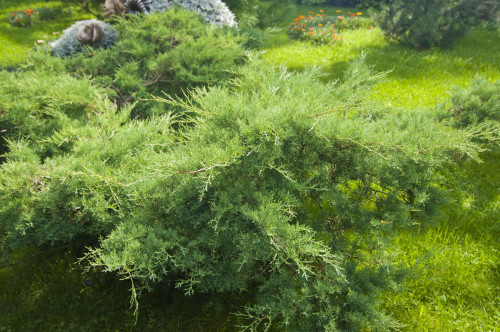
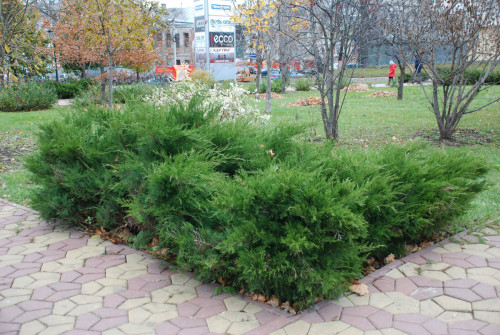
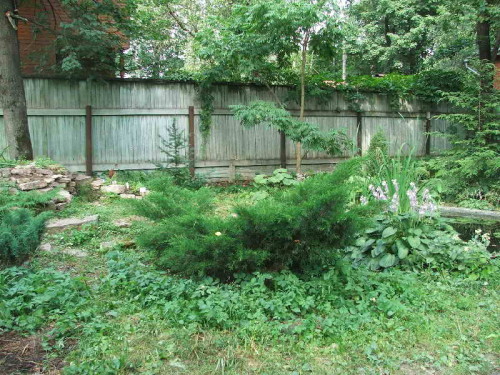
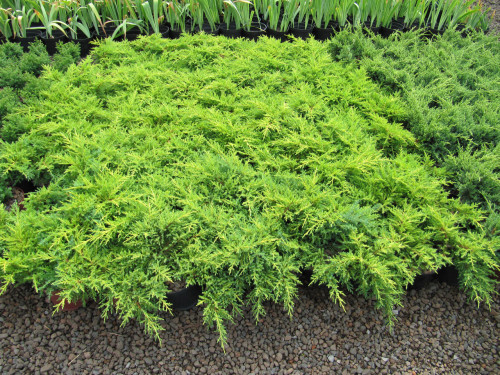
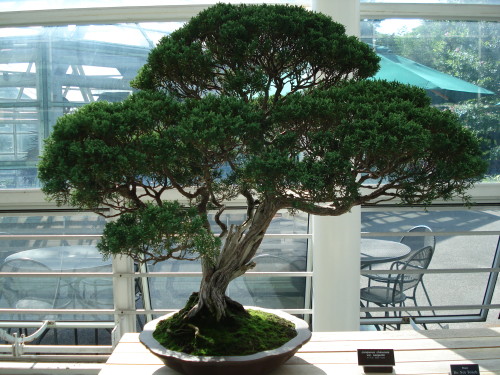
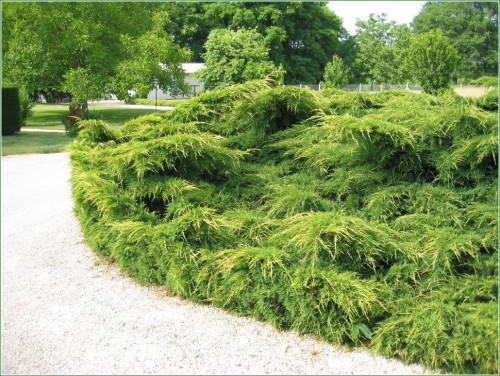












 Start a discussion ...
Start a discussion ...